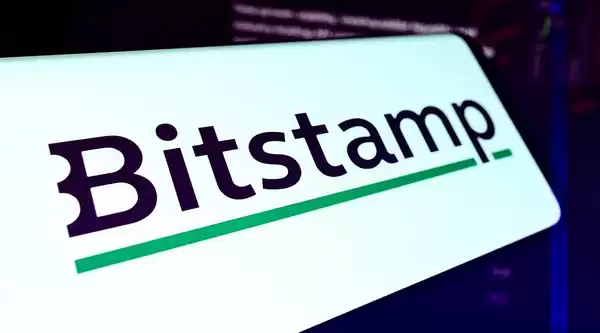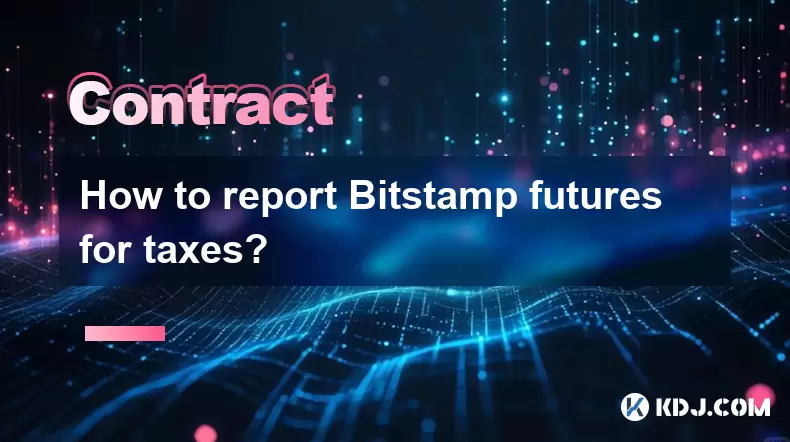-
 Bitcoin
Bitcoin $114400
0.68% -
 Ethereum
Ethereum $3550
2.48% -
 XRP
XRP $3.001
4.99% -
 Tether USDt
Tether USDt $0.9999
0.01% -
 BNB
BNB $757.6
1.46% -
 Solana
Solana $162.9
1.07% -
 USDC
USDC $0.9998
0.00% -
 TRON
TRON $0.3294
0.91% -
 Dogecoin
Dogecoin $0.2015
2.46% -
 Cardano
Cardano $0.7379
2.01% -
 Stellar
Stellar $0.4141
8.83% -
 Hyperliquid
Hyperliquid $37.83
-1.91% -
 Sui
Sui $3.454
0.76% -
 Chainlink
Chainlink $16.62
3.53% -
 Bitcoin Cash
Bitcoin Cash $554.6
2.84% -
 Hedera
Hedera $0.2486
3.91% -
 Ethena USDe
Ethena USDe $1.001
0.00% -
 Avalanche
Avalanche $21.95
3.34% -
 Toncoin
Toncoin $3.563
-2.85% -
 Litecoin
Litecoin $112.7
2.65% -
 UNUS SED LEO
UNUS SED LEO $8.977
0.13% -
 Shiba Inu
Shiba Inu $0.00001232
1.85% -
 Uniswap
Uniswap $9.319
2.93% -
 Polkadot
Polkadot $3.632
1.38% -
 Monero
Monero $307.2
2.36% -
 Dai
Dai $0.9997
-0.03% -
 Bitget Token
Bitget Token $4.340
0.91% -
 Pepe
Pepe $0.00001048
1.07% -
 Cronos
Cronos $0.1348
3.26% -
 Aave
Aave $261.5
1.93%
Bitstamp contract trading process
Contract trading on Bitstamp offers leverage and flexibility, enabling traders to speculate on cryptocurrency price fluctuations without directly owning the underlying asset, but it also carries risks such as high volatility and the potential for liquidation.
Nov 08, 2024 at 07:15 pm

Bitstamp Contract Trading Process: A Comprehensive Guide
Bitstamp, a leading cryptocurrency exchange, has recently introduced contract trading, a sophisticated trading instrument that allows traders to speculate on the future price of cryptocurrencies using leverage. This article will delve into the comprehensive process of contract trading on Bitstamp, providing a step-by-step guide for traders of all experience levels.
Understanding Contract Trading
1. What is Contract Trading?
Contract trading involves the buying and selling of contracts that represent an underlying asset, in this case, cryptocurrencies. These contracts are standardized agreements that specify the contract size, expiry date, and settlement price. Traders can speculate on the future price of the underlying asset without actually owning it.
2. Benefits of Contract Trading
Contract trading offers several benefits, including:
- Leverage: Traders can use leverage to amplify their potential profits and losses, allowing them to trade with a larger position than their initial capital allows.
- Flexibility: Contracts can be bought and sold at any time during the trading day, providing traders with greater flexibility compared to spot trading.
- Hedging: Contracts can be used to hedge against price fluctuations, allowing traders to protect their existing positions or speculate on future price movements.
3. Risks of Contract Trading
Contract trading also involves risks, including:
- High Volatility: Cryptocurrency prices are highly volatile, which can lead to significant losses for leveraged traders.
- Liquidation: If the market moves against a trader's position, their contract may be liquidated, resulting in the loss of their initial capital and any potential profits.
- Margin Calls: Traders may be required to post additional funds if their account equity falls below the required maintenance margin, which can add to their losses.
Setting Up for Contract Trading on Bitstamp
4. Opening a Bitstamp Account
To start contract trading on Bitstamp, users must create an account and complete the verification process. This involves providing personal information, such as their name, address, and proof of identity.
5. Funding the Account
Traders need to fund their Bitstamp account with the cryptocurrency they intend to trade. Deposits can be made via bank transfer, credit/debit card, or another cryptocurrency exchange.
6. Understanding the Trading Interface
The Bitstamp trading interface provides various tools and features for contract trading. Traders can select the desired cryptocurrency pair, view the order book, and set different order types to manage their positions effectively.
Placing Contract Trades
7. Choosing a Trading Pair
Traders need to select the cryptocurrency pair they want to trade, such as BTC/USDT or ETH/USD. Bitstamp offers a wide range of trading pairs to meet traders' needs.
8. Selecting a Contract
Each trading pair offers multiple contracts with different expiry dates and strike prices. Traders need to choose the contract that aligns with their trading strategy and risk tolerance.
9. Setting Order Parameters
Traders can choose from various order types, including limit orders, market orders, and stop-loss orders. Each order type allows traders to control the price and execution of their trades.
Managing Contract Positions
10. Monitoring the Position
Once a contract trade is executed, traders can track its performance in the "Positions" tab. This section provides real-time updates on the position's profit/loss, leverage, and margin level.
11. Using Stop-Loss and Take-Profit Orders
Traders can use stop-loss and take-profit orders to manage their risk and secure profits. Stop-loss orders automatically sell the contract if the price falls below a specified level, while take-profit orders automatically sell when the price reaches a desired profit target.
12. Margin Management
Leveraged trading requires traders to maintain a sufficient margin level to cover potential losses. Traders need to monitor their margin level and add additional funds to their account if necessary to avoid liquidation.
Closing Contract Trades
13. Selling the Contract
To close a contract trade, traders need to sell the contract back to the market. The contract can be closed at any time during the trading day.
14. Settlement
Upon the contract's expiry date, it is automatically settled at the settlement price. Traders receive their profits or losses based on the difference between the contract's entry and settlement prices.
Disclaimer:info@kdj.com
The information provided is not trading advice. kdj.com does not assume any responsibility for any investments made based on the information provided in this article. Cryptocurrencies are highly volatile and it is highly recommended that you invest with caution after thorough research!
If you believe that the content used on this website infringes your copyright, please contact us immediately (info@kdj.com) and we will delete it promptly.
- Cryptocurrency, Altcoins, and Profit Potential: Navigating the Wild West
- 2025-08-04 14:50:11
- Blue Gold & Crypto: Investing Disruption in Precious Metals
- 2025-08-04 14:30:11
- Japan, Metaplanet, and Bitcoin Acquisition: A New Era of Corporate Treasury?
- 2025-08-04 14:30:11
- Coinbase's Buy Rating & Bitcoin's Bold Future: A Canaccord Genuity Perspective
- 2025-08-04 14:50:11
- Coinbase's Buy Rating Maintained by Rosenblatt Securities: A Deep Dive
- 2025-08-04 14:55:11
- Cryptos, Strategic Choices, High Returns: Navigating the Meme Coin Mania
- 2025-08-04 14:55:11
Related knowledge

Why is my Bitstamp futures position being liquidated?
Jul 23,2025 at 11:08am
Understanding Futures Liquidation on BitstampFutures trading on Bitstamp involves borrowing funds to open leveraged positions, which amplifies both po...

How to report Bitstamp futures for taxes?
Jul 30,2025 at 08:35am
Understanding Bitstamp Futures and Taxable EventsWhen trading Bitstamp futures, it’s essential to recognize that these financial instruments are treat...

Does Bitstamp offer inverse contracts?
Jul 23,2025 at 01:28pm
Understanding Inverse Contracts in Cryptocurrency TradingIn the realm of cryptocurrency derivatives, inverse contracts are a specific type of futures ...

What is the difference between futures and perpetuals on Bitstamp?
Jul 27,2025 at 05:08am
Understanding Futures Contracts on BitstampFutures contracts on Bitstamp are financial derivatives that allow traders to speculate on the future price...

How to find your Bitstamp futures trade history?
Jul 23,2025 at 08:07am
Understanding Bitstamp and Futures Trading AvailabilityAs of the current state of Bitstamp’s service offerings, it is critical to clarify that Bitstam...

Can I use a trailing stop on Bitstamp futures?
Jul 23,2025 at 01:42pm
Understanding Trailing Stops in Cryptocurrency TradingA trailing stop is a dynamic type of stop-loss order that adjusts automatically as the price of ...

Why is my Bitstamp futures position being liquidated?
Jul 23,2025 at 11:08am
Understanding Futures Liquidation on BitstampFutures trading on Bitstamp involves borrowing funds to open leveraged positions, which amplifies both po...

How to report Bitstamp futures for taxes?
Jul 30,2025 at 08:35am
Understanding Bitstamp Futures and Taxable EventsWhen trading Bitstamp futures, it’s essential to recognize that these financial instruments are treat...

Does Bitstamp offer inverse contracts?
Jul 23,2025 at 01:28pm
Understanding Inverse Contracts in Cryptocurrency TradingIn the realm of cryptocurrency derivatives, inverse contracts are a specific type of futures ...

What is the difference between futures and perpetuals on Bitstamp?
Jul 27,2025 at 05:08am
Understanding Futures Contracts on BitstampFutures contracts on Bitstamp are financial derivatives that allow traders to speculate on the future price...

How to find your Bitstamp futures trade history?
Jul 23,2025 at 08:07am
Understanding Bitstamp and Futures Trading AvailabilityAs of the current state of Bitstamp’s service offerings, it is critical to clarify that Bitstam...

Can I use a trailing stop on Bitstamp futures?
Jul 23,2025 at 01:42pm
Understanding Trailing Stops in Cryptocurrency TradingA trailing stop is a dynamic type of stop-loss order that adjusts automatically as the price of ...
See all articles

























































































